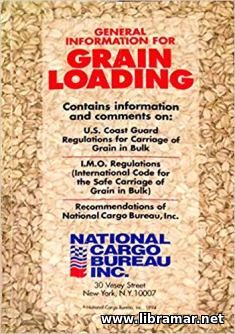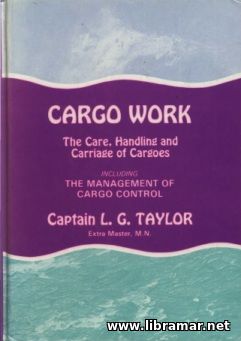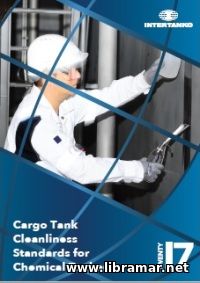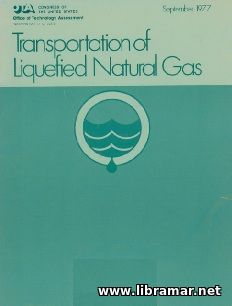 The publication was released by North of England P&I Association in order to provide guidance to the stowage and securing of the pipes carried on board ships. It starts with some general technical information about handling pipes and applicable regulatory framework.
The second chapter will give valuable guidelines covering the characteristics of pipes, it will tell you what steps shall be taken prior to the loading, how to stow and secure pipes - and theoretical information will be supplemented with the worked examples.
The next chapter of the booklet is covering the protection of the pipes, construction of the stanchions, securing arrangements etc. There are two appendices to the main part of the publication, describing the advanced calculation method and providing necessary information and examples of verification of the securing alternatives for the pipes stowed on deck.
Needless to say that this compact yet very informative volume will be of great practical use for all parties involved in marine transportation of pipes and is therefore highly recommended to the crew members of the vessels transporting pipes as well as to any other person dealing with arrangement of their transportation.
 The content of the present booklet on proper loading of grain intended for marine transportation was prepared by the specialists of the National Cargo Bureau with the aim of facilitating the grain loading in bulk in American ports by providing all required information on the relevant regulatory framework; it also gives some general technical information, such as the grain data and associated stability calculation together with the stowage arrangements etc.
The original edition published back in 1994 has been thoroughly revised and updated in 2013. The volume opens with the brief information about IMO and principle and limitations outlined in the Grain Rules. The next chapter of the book is dealing with the requirements covering the heeling moments and stowage factor, trimming and leveling, document of authorization, angle of flooding, lashing and strapping, and many other factors.
The chapter addressing the grain loading covers preparation of the vessel for grain loading, trim and stability problems, different methods of securing, necessary precautions to be taken, allowance tables, standard bushel weights etc. In short, the publication is very practical and shall be possessed on board vessels engaged in transportation of the grain, especially to and from U.S. ports.
 The present manual written by two prominent industry experts is intended for all people engaged in the process of sampling an subsequent analysis of the crude oil after their production and stabilization. The content of the publication will be particularly useful to the operators of the tankers carrying crude oil and to the workers of the terminals storing oil. It will also present practical interest to the lab personnel assigned responsibility for the characterization of the crude oil and to the refiners processing the oil.
And, of course, the traders dealing with sale or acquisition of the crude oil will also appreciate the book. The volume opens with the compact but comprehensive glossary of terms used in the industry when dealing with crude oil. The first section is devoted to the oil sampling including manual sampling and sample transfers, mixing systems and storage of samples, auto-sampling and mixing methods etc.
The second section is the inspection assays - here the readers will find information about the API gravity and density, water and sediment, salt content and fluidity, carbon residue, total acid number, characterization factor, microwave digestion, trace elements, nitrogen content etc. The other sections of the volume deal with the quality assurance, compatibility and stability of crude oil, using oil and fuel and other important topics. Three appendixes will give you some additional information.
 Have a look into this revised, twelfth edition of one of the most popular books available on cargo handling. The content of the previous edition was supplemented with numerous images to illustrate the significant impact of containerization together with the influence of marine ports and associated activities. The volume will be greatly appreciated by the maritime industry since it covers a very wide range of cargoes and services that move around the planet.
The material contained in the publication is reflecting the demands and interests of shippers for the profitable and efficient means of transporting their goods as well as the procedures to be established and followed during the cargo handling. Note that the book will be interesting not only to the cargo officers but also to any other persons engaged in cargo carriage.
The author has managed to cover, in a single volume, such important aspects of cargo handing as main principles and working gear, cargo on passages and ventilation issues, specific types of cargo, cargo handling facilities, management of transportation cargoes by sea and others. The appendixes provide supplementary information on containerization and cargo movement. Several data diagrams have been included to make the text more informative and understandable.
 This publication prepared and released by Intertanko will provide readers with the standards applicable to the cleanliness of the tanks of the chemical tankers. Subject standards were originally developed in 2011 in order to simplify the process of verification of the tank cleanliness. Another goal was to reduce the number and extent of the internal inspections of the tanks.
This, in turn, would allow to predict both costs and potential consequences of the standards and estimate the impacts of the standards on the time and costs normally required for preparation of the tanks and their cleaning. Another benefit is the reduced usage of the cleaning chemicals, longer life of the equipment and tank coatings etc. The entire efficiency of the process will increase noting the reduced demand for the manpower and fuel.
We would also draw your attention to the significantly improved port turnaround as well as clarity on charter-party terms and reduced number of tanks to be inspected in port. The document will be of great practical interest to all ship owners who are held responsible for the tank cleanliness and would bear all liabilities if the tanks of their vessels are not clean enough, i.e. not meeting the requirements contained in the standards.
 The content of the present publication contains professional assessment of all matters related to the transportation of the LNG, i.e. liquefied natural gas. The authors of the volume have identified nine major areas of concern and each of them has been given close attention. Subject areas will be of concern to United States Congress in connection with the new legislation in the field, oversight of the official Federal entities assigned responsibilities of the liquefied natural gas systems etc.
Five of those areas are actually concerned with the established procedures and existing equipment for the facilities in operation. The regulatory changes in those areas are applicable to the ongoing processes. The five areas include tanker operations and regulations, regulation of the terminal operations, design and construction of the tankers, safety research. and the process of making decisions relating to certification of the projects. The other four areas feature long range implications. They typically affect the facilities and policies relating to the future projects and include reliability of supplies, facility sighting, liability for the accidents, and pricing policy.
 The modern tankers carrying chemical products are deservedly considered maybe the most technologically advanced commercial ships. Their complexity is resulting from the broad range of cargoes that such vessels are designed and constructed to transport and also from the nature and technical characteristics of the cargo. The cargoes normally carried on board chemical tankers are treated as hazardous materials requiring very careful handling.
The mission of these vessels is to cargo liquid chemical products in bulk form all around the world while paying due attention to the protection of human life, property and the environment. In addition, crew shall take care on protecting the quality of the cargo. Moreover, the ship owners and operators shall be provided with the effective economic measures. Their design will allow chemical tankers to transport different cargoes that commonly range from inorganic acids and fish oil to petroleum products and specialty chemicals.
We may categorize the chemical cargoes in different ways. They may be grouped on the basis of their composition or based on their origin. As implied by the title, the present booklet is intended to provide the crew members of the chemical tankers as well as the students and trainees with some information related to cleaning the cargo tanks.
 A very popular and very useful publication on cargo handling, this is a guidebook containing tons of the information about the loading and handling, securing and stowage, and finally maritime transportation of different types of goods. Note, however, that the content of this book does not cover liquid cargoes and gases.
The opening chapter of the publication tells readers what the cargo is in general and what kinds of cargoes are there; it also covers the parameters to be taken into consideration for successful transportation of cargoes including planning, stowage and distribution.
Particular attention has been paid by the author of the volume to containerized cargo, lashing materials and arrangements for such cargoes, reefer containers together with the associated cooling technology, stowage and planning of the reefer cargoes, various bulk cargoes and procedures for their loading and distribution, design and construction of the bulk carriers, categories of the vessels transporting cargo in bulk, cargo liquefaction, grains and various grain products, general cargo, etc.
The responsibilities of the ship Master and Shipper are covered in the separate chapter. Two other sections have been devoted to the transportation of the heavy lift cargo, forces commonly acting on cranes, hoisting devices, steel and timber cargo, ro-ro vessels and so many other aspects of maritime cargo transportation and handling making this volume an excellent one for every single person working in the maritime industry.
|







